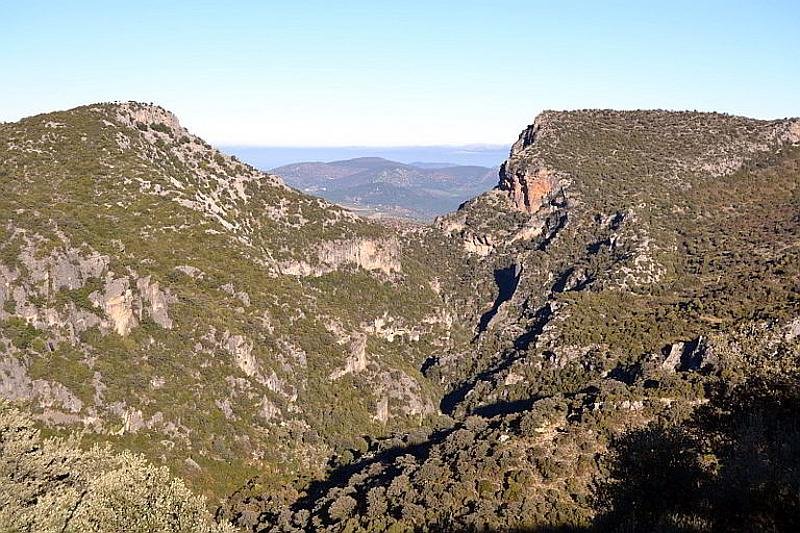The province of Cádiz in Andalucía is a haven for nature lovers, offering seven breathtaking protected areas. From dense cork oak forests to dramatic coastal cliffs, each location provides unique natural beauty and opportunities for exploration. Below, we’ll delve into what makes each of these areas special and how you can start Exploring the Protected Natural Areas of Cádiz
Los Alcornocales Natural Park
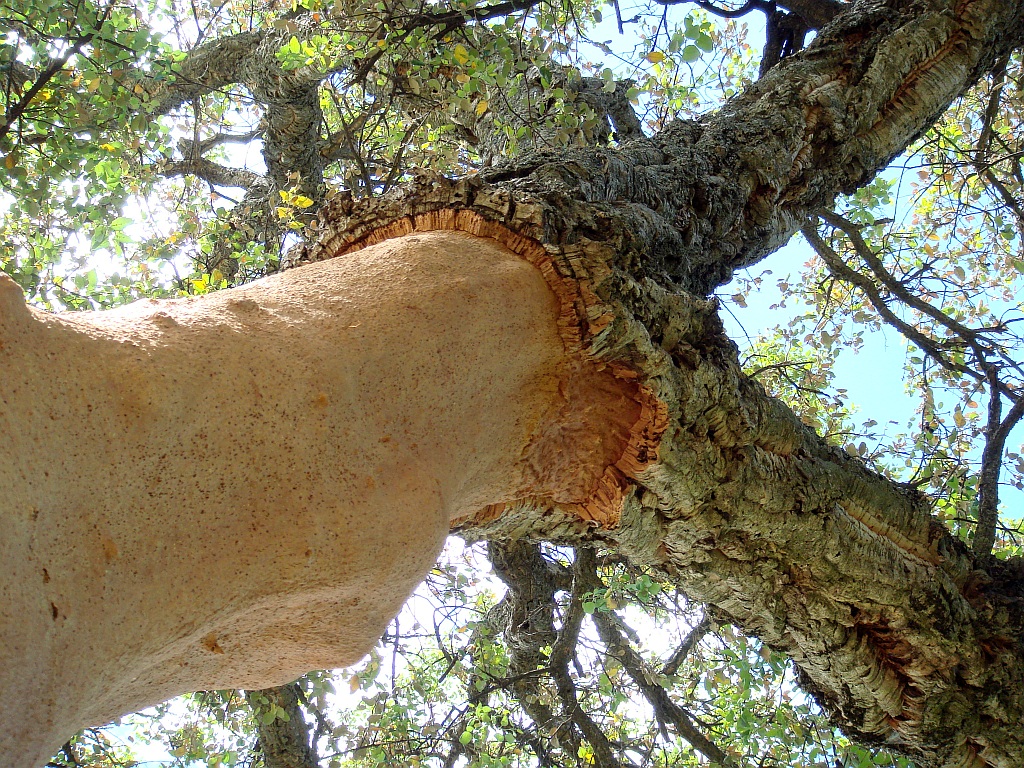
A Dense Forest of Cork Oaks
Los Alcornocales is one of the largest and most significant natural parks in southern Spain. It is renowned for its extensive cork oak forests, which are some of the best-preserved in Europe. The park is a mosaic of green valleys, rivers, and rugged mountains. It’s a paradise for wildlife enthusiasts, with species like the Iberian lynx, Egyptian vulture, and a variety of deer calling it home. The park’s unique microclimate supports a wealth of flora, including rare ferns and wild mushrooms.
Outdoor Activities and Scenic Views
Visitors can enjoy numerous outdoor activities, such as hiking, birdwatching, and horseback riding. For those a bit more adventurous check out the organised canyoning trips in the Buitreras canyon. Trails like the Ruta del Río de la Miel offer scenic views of cascading waterfalls and lush greenery. The Aljibe peak provides panoramic vistas over the forested landscape, especially stunning during the early morning mist.
Getting There from Cádiz
To reach Los Alcornocales from Cádiz, you can drive along the A-381 highway towards Algeciras. The journey takes about 1 hour and 30 minutes by car. Public transportation is limited, so driving is the most convenient option. The entrance to the park is well-marked, with several access points, including the towns of Alcalá de los Gazules and Jimena de la Frontera.
You can read more in depth information about Los Alcornocales natural park here.
Hotels in the province of Cádiz
For an unforgettable experience, consider staying overnight in one of the parks’ charming hotels or rustic lodges. Waking up surrounded by the serene beauty of nature allows you to fully immerse yourself in the landscape, with early morning hikes, sunset views, and the chance to observe wildlife in their most active moments. Whether you’re nestled in the forests of Los Alcornocales or overlooking the cliffs of La Breña, an overnight stay enhances your connection to these stunning natural environments, offering peace, tranquility, and a deeper appreciation of the park’s unique atmosphere.
Sierra de Grazalema Natural Park
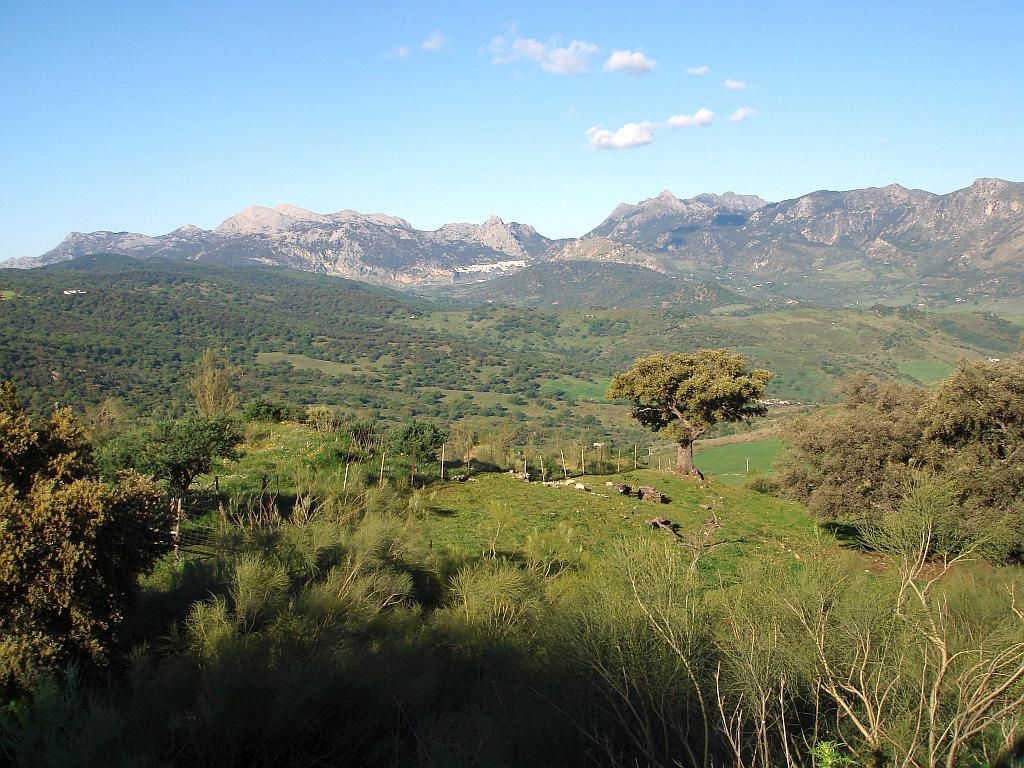
Rugged Mountains and Biodiversity
The Natural Park of the Sierra de Grazalema has also been declared a Biosphere Reserve, this is due to the diverse geography with high limestone mountains and deep gorges such as Garganta Verde, (Green Gorge) that is 400m deep and filled with lush vegetation. In addition, it offers a great diversity of species- animals and vegetation.
Adventure and Wildlife
Hiking is the main activity here, with trails like the Pinsapar, Garganta Verde and the Rio Majaceite offering breathtaking views of the rugged terrain. Birdwatchers will be thrilled by the park’s population of griffon vultures, which nest on the high cliffs. The village of Grazalema, nestled within the park, is a charming stopover with its whitewashed houses and vibrant local culture. Viator has a Sierra de Grazalema activities page.
Getting There from Cádiz
From Cádiz, take the A-382 highway towards Arcos de la Frontera, and then continue on the A-372 to Grazalema. The drive takes around 1 hour and 45 minutes. Buses run from Cádiz to Arcos de la Frontera, where you can catch a local bus to Grazalema, but driving is preferable for easier access to the park’s various hiking trails.
Read more about the Sierra de Grazalema natural park here.
El Estrecho Natural Park
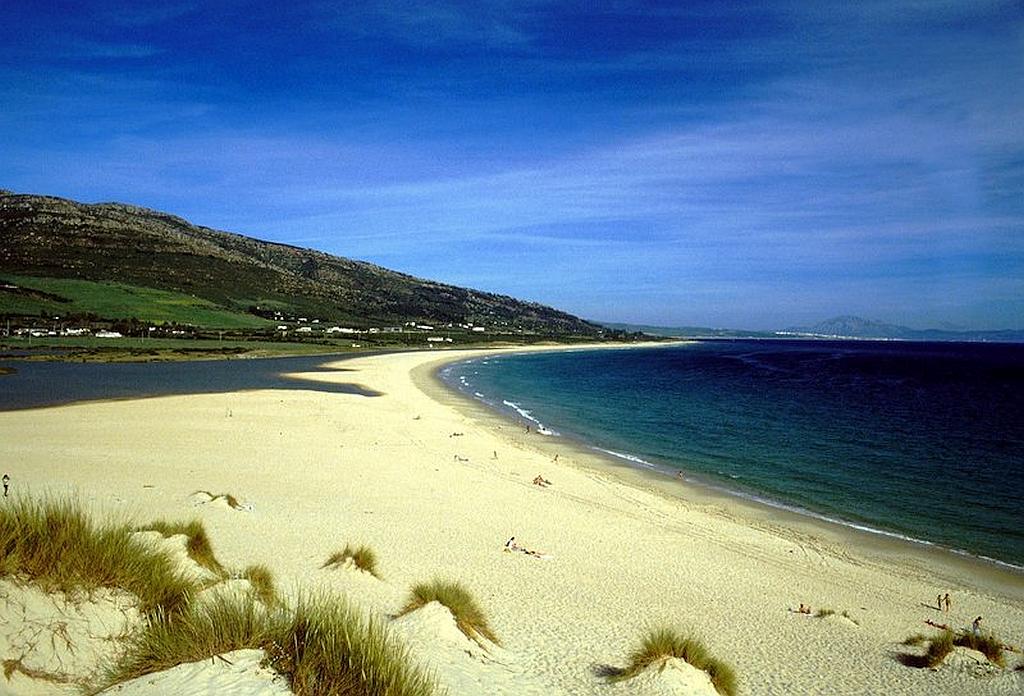
Where the Mediterranean Meets the Atlantic
El Estrecho Natural Park is a coastal gem located at the southernmost point of mainland Europe, where the Mediterranean Sea meets the Atlantic Ocean. The park offers stunning views of the Strait of Gibraltar and the Moroccan coast. Its varied landscapes include sandy beaches, cliffs, and dunes, as well as underwater ecosystems teeming with marine life.
A Unique Marine and Coastal Environment
The park is a hotspot for marine activities, including scuba diving, snorkeling, and windsurfing. The beaches of Bolonia and Valdevaqueros are particularly popular for their golden sands and crystal-clear waters. Birdwatchers flock to the area to observe migratory species, particularly during the spring and autumn months. Check out kayaking, fishing and dolphin watching tours over at Viator.
Getting There from Cádiz
To reach El Estrecho Natural Park, drive along the N-340 highway towards Tarifa. The journey takes about 1 hour and 30 minutes by car. Regular buses run from Cádiz to Tarifa, making it accessible even without a car. From Tarifa, various trails lead into the park, and several parking areas provide easy access to the beaches and coastal paths.
Read more about El Estrecho natural park here.
Bahía de Cádiz Natural Park
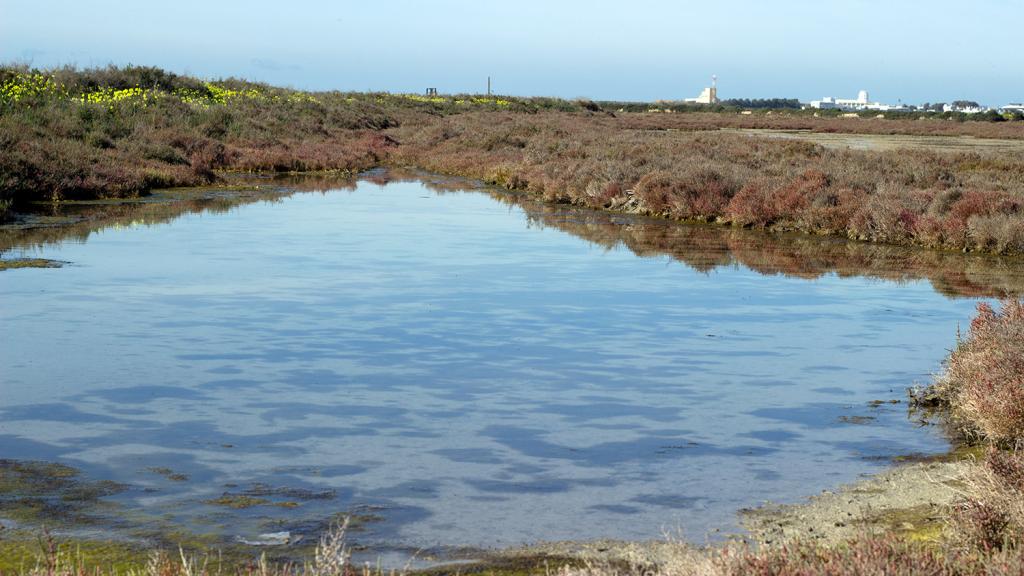
Coastal Wetlands and Salt Marshes
Bahía de Cádiz Natural Park is a network of coastal wetlands, salt marshes, and sandy beaches, located right at the doorstep of Cádiz city. The park is a sanctuary for migratory birds, with large populations of flamingos, herons, and spoonbills. The landscape is dotted with traditional salt pans, reflecting the area’s historic salt production.
A Haven for Birdwatching and Leisure
The park offers numerous trails and observation points for birdwatching, making it a paradise for ornithologists. The beaches of Camposoto and La Cortadura provide tranquil spots for swimming and sunbathing. Additionally, the park is ideal for kayaking and sailing, with calm waters and beautiful surroundings. Here are some kayaking and snorkelling options from Viator in the nearby strait of Gibraltar.
Getting There from Cádiz
Bahía de Cádiz Natural Park is easily accessible from the city of Cádiz. You can drive along the CA-33 towards San Fernando, with the park entrance just a short distance away, taking around 20 minutes by car. Public buses and trains also connect Cádiz with San Fernando and Puerto Real, providing convenient access to the park.
Read some more in depth information about the Bahía de Cádiz natural park here.
La Breña y Marismas del Barbate Natural Park
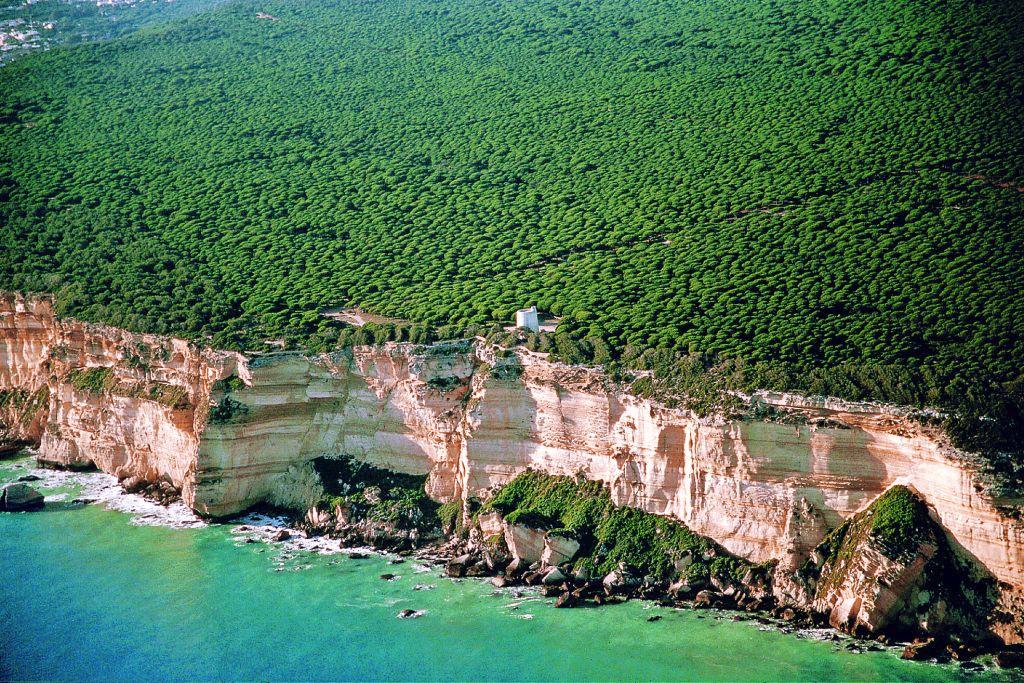
Majestic Cliffs and Pine Forests
La Breña y Marismas del Barbate Natural Park is known for its impressive cliffs, which rise up to 100 meters above the Atlantic Ocean, and its dense pine forests. The park’s diverse landscape includes marshes, dunes, and the picturesque fishing village of Barbate. The towering cliffs offer breathtaking views of the coastline, particularly from the popular cliff-top trails.
Exploring the Coastal Beauty
The park is ideal for hiking, with trails like the Sendero de los Acantilados showcasing stunning ocean views and dramatic rock formations. The pine forests are perfect for leisurely walks, especially in the cooler months. Visitors can also explore the coastal caves, which have a rich archaeological history. Check out this great guided walking tour from barbate to Caños de Meca.
Getting There from Cádiz
To visit La Breña y Marismas del Barbate, drive south along the A-48 and then take the N-340 towards Barbate. The journey takes approximately 1 hour by car. Buses also run from Cádiz to Barbate, making it an accessible destination without the need for a vehicle. The park’s main entrances are well-signposted from Barbate.
Read more about La Breña y Marismas del Barbate here.
Doñana National Park
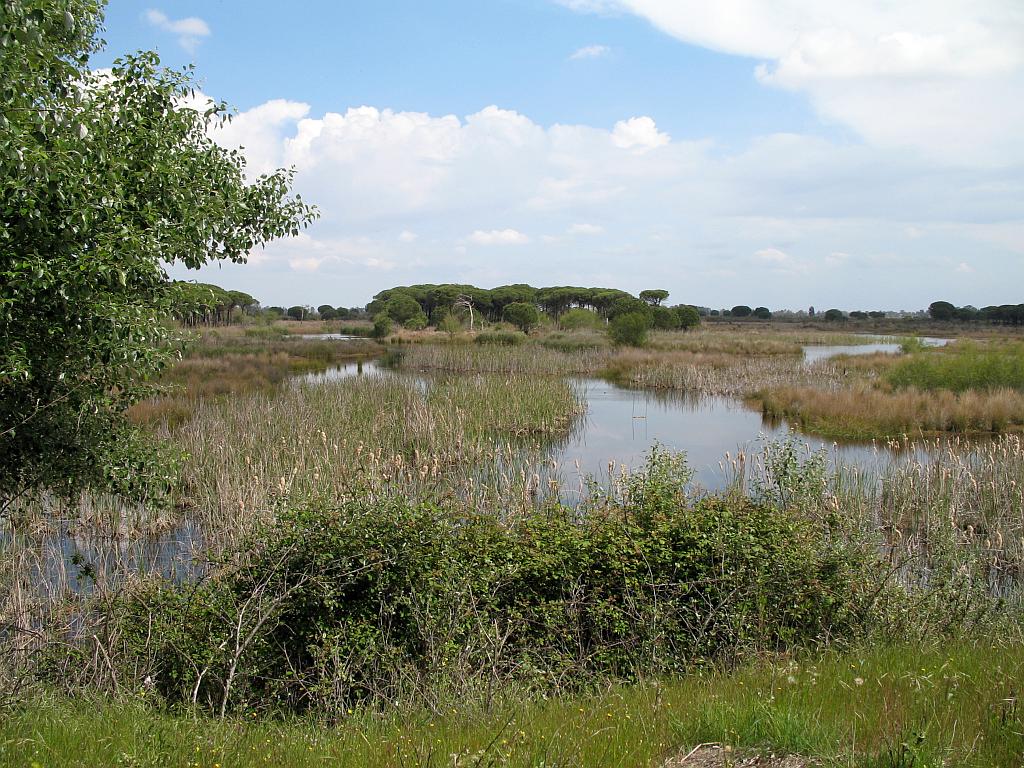
A UNESCO World Heritage Site
Doñana National Park is one of Europe’s most important wetlands and a UNESCO World Heritage Site. The park is famous for its vast marshes, sand dunes, and diverse wildlife. It is home to the endangered Iberian lynx, as well as a haven for birdlife, particularly during migration periods. The park’s varied ecosystems include forests, lagoons, and a stretch of pristine beaches.
Wildlife Safaris and Birdwatching
Guided tours and wildlife safaris offer the best way to explore Doñana, taking visitors deep into the park’s remote areas. Birdwatching is a major draw, with thousands of flamingos, herons, and storks creating a spectacular sight. The park’s beaches are also worth exploring, especially the unspoiled Playa de Castilla.
Getting There from Cádiz
Reaching Doñana from Cádiz involves a drive along the AP-4 towards Jerez, then taking the A-471 to Sanlúcar de Barrameda, where ferries cross the Guadalquivir River to the park. The journey takes about 1 hour and 30 minutes by car. Tours often depart from Sanlúcar, offering guided access to the park’s restricted areas. Public transportation options include buses to Sanlúcar, followed by local tours.
Read more about the Doñana national park here.
The Via Verde and Peñón de Zaframagón Nature Reserve
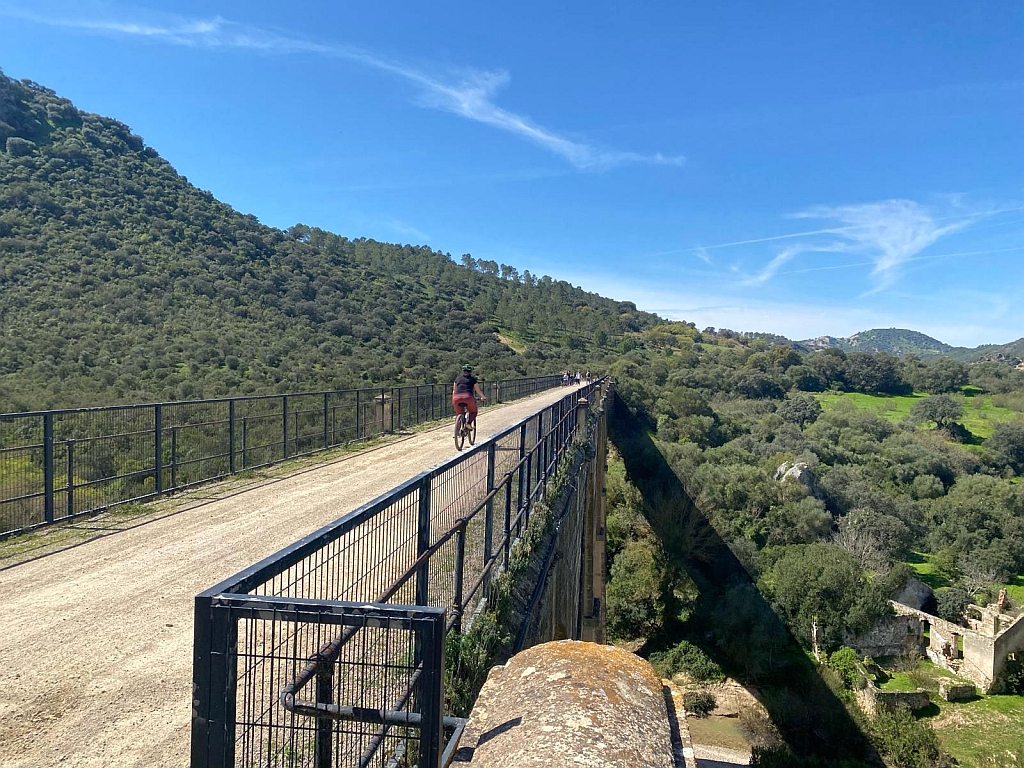
The Via Verde
The Via Verde beginning at Olvera is one of the most popular cycling and walking routes of the Sierra de Cadiz. 36 kilometres of disused railway converted to a delightful greenway with spectacular views, tunnels, viaducts, and pristine countryside to explore. Check out the organized cycling tours along the Vía Verde de la Sierra at Viator.
A Sanctuary for Griffon Vultures
Peñón de Zaframagón Nature Reserve is a small yet significant protected area known for its population of griffon vultures. The reserve features a striking limestone peak, the Peñón de Zaframagón, which rises dramatically from the surrounding landscape. This area is a crucial breeding ground for these majestic birds, with one of the largest colonies in Andalucía.
Birdwatching and Scenic Hikes
The main attraction of the reserve is the opportunity to observe griffon vultures in their natural habitat. A visitor center provides insights into the vulture population and the reserve’s ecology. Several hiking trails lead through the rugged terrain, offering scenic views of the surrounding countryside and the impressive rock formations.
Getting There from Cádiz
To visit Peñón de Zaframagón, drive north on the A-382 towards Villamartín, then continue on local roads to Olvera and the reserve. The drive takes about 1 hour and 45 minutes from Cádiz. Public transportation is limited, so driving is recommended.
Read more about the Via Verde and the Peñon de Zaframagón here.
Ronda Today
Everything you need to know before you visit Ronda “The city of dreams” in Andalucia. https://www.rondatoday.com/
Visit Cádiz
Planning on visiting Cádiz? Tourist information. Monuments. Hotels. Activities. City guides: https://visitingcadiz.com/
The Caminito del Rey
Find tickets for the Caminito del Rey: https://www.caminodelrey.es/
Wildside Holidays – Spain
Take a trip on the Wildside! Discover the wildlife and nature of Spain, its Natural and National Parks and find the top wildlife, activity and walking holiday companies.
Iberia Nature Forum
Struggling with identifying those bugs and beasties? Why not check out the Iberia nature Forum! https://iberianatureforum.com/
I’ve been living in this lovely area of Western Andalucia for the last 20 years or so and dedicate most of my time to the running of English language tourist information websites for the towns of Cádiz, Ronda, Grazalema, the famous or infamous Caminito del Rey, and also Wildside Holidays, which promotes sustainable and eco-friendly businesses running wildlife and walking holidays in Spain. My articles contain affiliate links that will help you reserve a hotel, bus, train or activity in the area. You don’t pay more, but by using them you do support this website. Thankyou!
